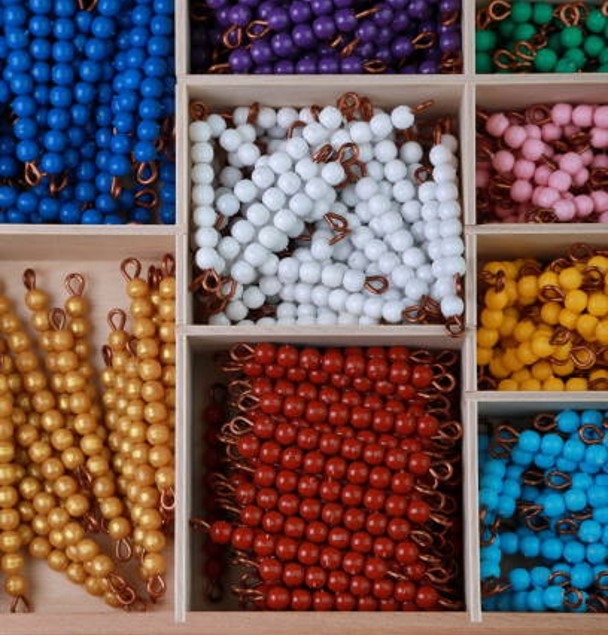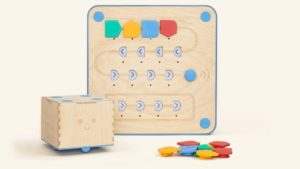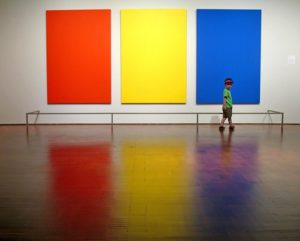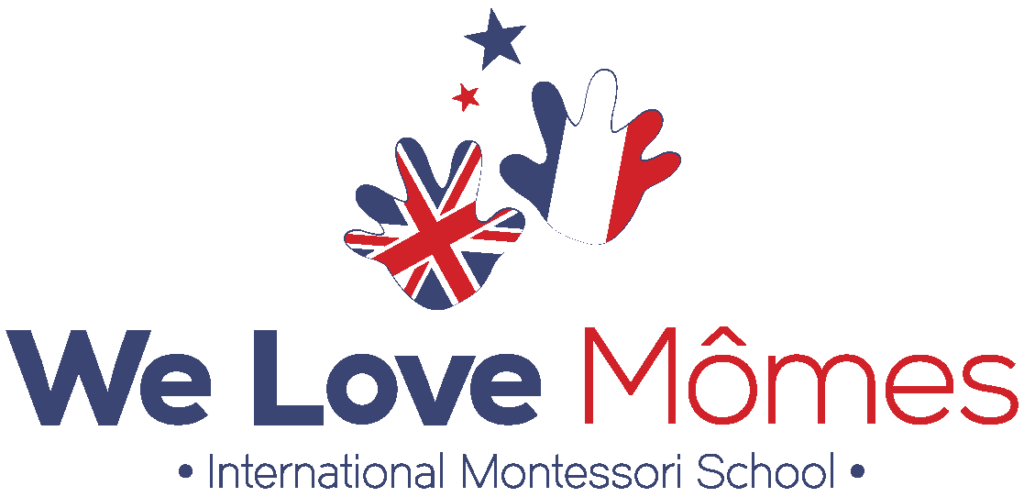Progressive and Concrete Approach to Learning Mathematics
Learning mathematics with Montessori materials offers a progressive and concrete approach that promotes children’s understanding and engagement. This pedagogical method emphasizes sensory manipulation and hands-on experience, enabling children to develop a strong mathematical foundation while nurturing their interest in mathematics. Let’s explore how this progression unfolds to provide children with a rewarding mathematical learning experience.
Introduction to Basic Concepts
Children are initially introduced to basic mathematical concepts such as numeration, quantity, and mathematical symbols. With the help of Montessori materials, such as number rods and colored beads, they engage in sensory activities that allow them to manipulate and visualize abstract concepts. For example, they associate quantities with corresponding mathematical symbols, thus reinforcing their fundamental understanding of numbers and mathematical operations.
Exploration of Operations and Geometry
After acquiring the fundamentals, children progress to more advanced activities focused on mathematical operations and geometry. They use specific materials such as stamps and tiles to explore concepts like addition, subtraction, multiplication, and division. This hands-on approach enables them to manipulate and solve mathematical problems in a concrete and tangible way. Additionally, they are encouraged to develop their understanding of geometry by using Montessori geometric materials such as geometric solids and geometric constructions. These activities stimulate their creativity, spatial reasoning, and comprehension of shapes, angles, and measurements.
Aesthetic Materials
As basic materials for learning mathematics, we find objects of high aesthetic quality that greatly attract children and motivate them to engage:
- Counting Beads: Counting beads are a set of colored beads in various sizes. Children use these beads to learn mathematical concepts such as addition, subtraction, multiplication, division, and place value. Counting beads also help children understand numeration in a visual and tangible way.
- Number Rods: Number rods are a set of bars of different lengths and colors. The rods are used to teach basic mathematical concepts such as numeration, comparing numbers, addition, and subtraction. Number rods also help children understand mathematical concepts in a concrete manner.
- Ten Blocks: Ten blocks are a series of blocks that represent numbers from 1 to 10. Ten blocks are used to teach numeration and mathematical operations such as addition, subtraction, multiplication, and division. Ten blocks also help children understand place value and mathematical concepts in a visual manner.
- Bead Boards: Bead boards are a set of boards with colored beads that are used to teach mathematical concepts such as numeration, place value, addition, subtraction, and multiplication. Bead boards also help children understand mathematical concepts in a visual and concrete manner.
- Number Cards: Number cards are a set of cards with printed digits that are used to teach numeration, number comparison, and basic mathematical operations. Number cards also help children understand mathematical concepts in a visual manner.
- Fractions: Fractions are taught to children using wooden fraction discs. Children use these discs to understand fraction concepts, compare them, and manipulate them for basic mathematical operations. Fraction discs also help children understand mathematical concepts in a visual and concrete manner.
- Seguin Board: The Seguin Board is a set of plates with numbers from 1 to 100 printed on them. Children use these plates to learn numeration, number comparison, and basic mathematical operations. The Seguin Board also helps children understand place value and mathematical concepts in a visual manner.



